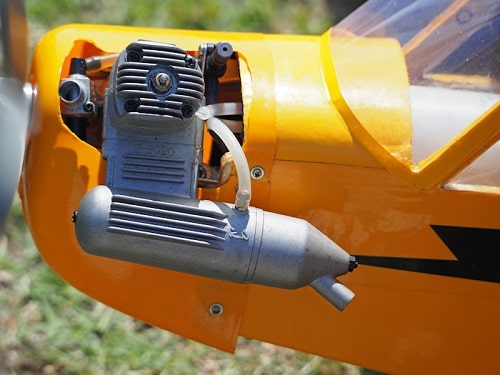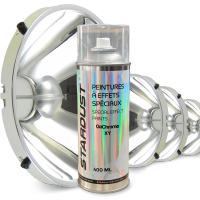All Products are in stock
and shipped from France.
Delivery within 48 hours.
and shipped from France.
Delivery within 48 hours.
Our categories
 Primers to apply with an airbrush
Primers to apply with an airbrush
We find the notion of primer in various and very different fields, such as the navy, construction, or even bodywork.
We are talking about primers in the painting process and there are also a few coats of primers in the world of airbrushing, with the Stardust pro airbrush paints for model making, which are a good example of the water primers usually used by artists using airbrushes.
The nature of these water-based acrylic primers is very different from the professional-type primers used in architecture, in boat building, or on the metal bodies of vehicles.
They are much simpler and general products, that is to say that the level of requirement of airbrush painters is not very high with regard to for example anti-corrosion protection, or even the power of membership on such or such support...
In general, in the field of airbrush painting, we do not really need a primer or primer, except in the case of realization on special materials, raw, bare and difficult to hang: this can be metals, plastics, glass, ... and in these cases only, it is really important to use a specific and efficient primer.
When painting with an airbrush, one generally paints on paper, or above an old painted background, such as a motorcycle fairing, a helmet, a car door: all these supports are already primed, painted and varnished. It is just necessary to do a quick sanding, to hang and paint.
Primers for airbrush paint
The different manufacturers of airbrushing products generally offer the same type of primer, that is to say a single general primer that is used for almost everything. It is not a specialized primer which will create a very high level of guaranteed adhesion, rather it is a basic primer which fulfills its role as a ground colour, with good general adhesion on a variety of materials : usually , this type of product has good adhesion to metals, glass and plastics. This is the case with the primary Stardust Pro.
Until today, it is really very rare and very difficult to find real membership promoters (because that is the primary meaning of the word primer) in a water-based version. All anti-corrosion primers or plastic primers are usually solvent-based.
When we talk about primer, we often mean a filling and leveling product, a thick and covering product, which allows surfacing, then sanding. That doesn't exist in the world of water-based paints either, because in general water-based paints aren't very sanding-friendly. As a result, the primer for airbrush paint has good general adhesion qualities, a color to create the background (white, gray, black) and also a good thickness, but we are far from the classic filling primer used by bodybuilders.
If you want to paint with an airbrush and use all these professional products, they are available on the StardustColors website in the primers category. Of course, it is perfectly possible to use a solvent-based primer, as a preparatory coat, and follow with the water-based paints of the airbrush paint ranges, whatever they are, because it is perfectly compatible.
 Specific primers for airbrushing and model making
Specific primers for airbrushing and model making
In the practice of model making, one paints boats, planes, all kinds of motor vehicles, intended to drive, navigate and fly in real conditions (often worse than real conditions). It is therefore very important to do serious preparation work, to avoid detachment and to withstand the often extreme conditions that the models will undergo.
When we talk about extreme conditions, we are referring to the projections of gasoline, engine heat, shock and fairing strain for car racing, or emergency landings for planes, and of course immersion for boats.
So it's recommended to clean, degrease, sand the raw surfaces well and to determine which is the best primer to guarantee lasting adhesion.
All this, we recommend that you once again turn to solvent-based professional primers. Our technical department is at your disposal to advise you on this subject.
It is perfectly possible to use all these primers with an airbrush, on models. In general, they are very fluid and dilutable products, and the application by airbrush is perfectly suitable.
Primers to apply with an airbrush for radiomodelling
Among all the disciplines combined that make up the world of model making, there is one that demonstrates very particular requirements regarding product performance, particularly in terms of grip first of all, but also in terms of resistance: this is model making on radio-controlled vehicles. In general, this type of miniature vehicles is intended to participate in races, whose speeds are culinary high, and whose practice is done on particularly steep earthy terrain.
The fairings of these vehicles are made of special polycarbonate and enthusiasts of this discipline know perfectly well that most paints do not hold up after one or two runs and peel off very quickly.
There is therefore a primer for Lexan (In the Hikari RC range), which is specially adapted for this plastic, which will allow adhesion without sanding and guarantee a long life for the paint, and often all the laborious work of decoration, with the different colors and graphics carried out with the airbrush.
Acrylic varnish for airbrush paint
Stardust pro auxiliary airbrush paint














































































